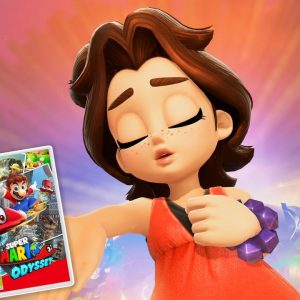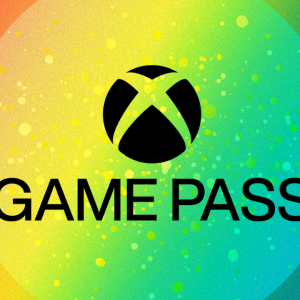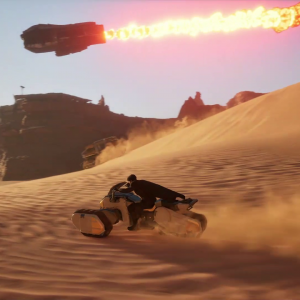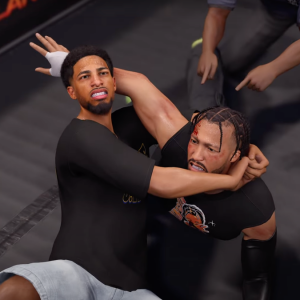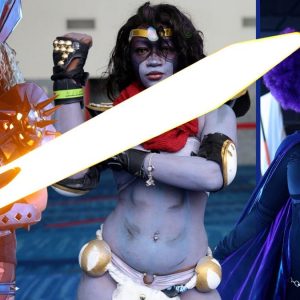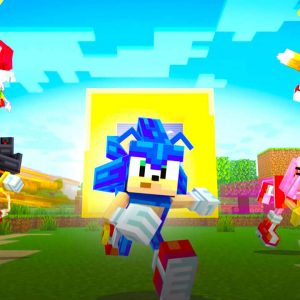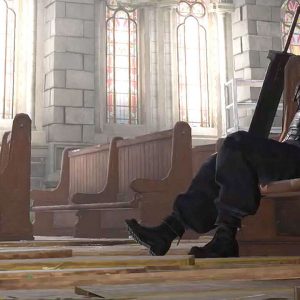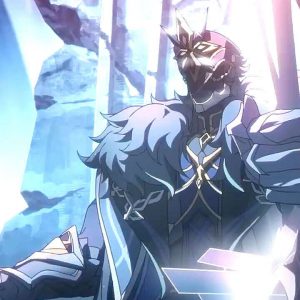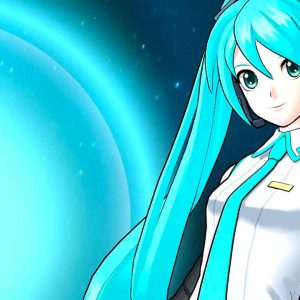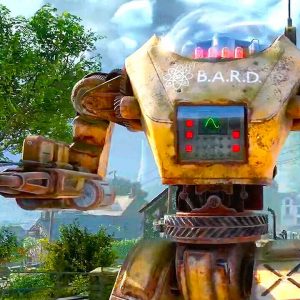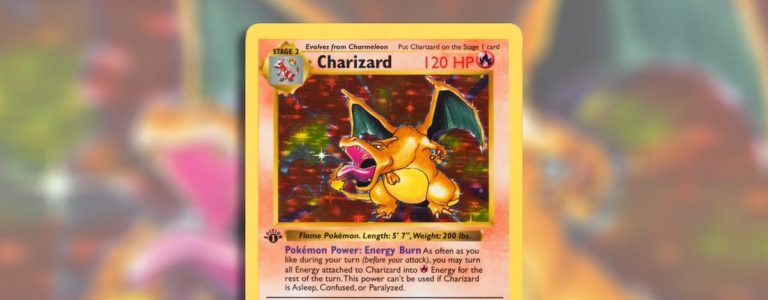When you’re working with a character whose legacy is as long and storied as Mickey Mouse’s, there’s a lot of history to contend with. But according to Disney Illusion Island creative director and Diala Studios CEO AJ Grand-Scrutton, the House of Mouse was willing to play ball on his studio’s ideas for a cooperative take on a “Metroidvania”-style game.
“Honestly, I don’t think anyone said no to me at any time,” Grand-Scrutton told Kotaku at Summer Game Fest.
Disney Illusion Island follows Mickey, Minnie, Donald, and Goofy through the world of Monoth, which is in a state of disarray after the theft of three magical tomes. Never one to turn down a chance to help others, Mickey and co. head out on an adventure which takes the form of a combatless, cooperative side-scroller, complete with Metroidvania-style backtracking and ability unlocks that fill out the map.
From a design standpoint, Grand-Scrutton cites influences like modern side-scrolling touchstones Rayman Legends and Ori and the Blind Forest. When I played the demo alongside Grand-Scrutton and Disney Games Producer Kelsey Wong, Disney Illusion Island held up against its inspirations. What could have easily felt like a mindless, licensed cash-in instead offered a great deal of tight-feeling platforming, cooperative play opportunities, and gorgeous animation evocative of Mickey’s modern animated series, The Wonderful World of Mickey Mouse. Disney Illusion Island isn’t a 1:1 recreation of a specific era of Mickey Mouse cartoons, but Grand-Scrutton traces its similarities and differences to other Mickey Mouse properties back to specific inspirations.
“So we’re completely separate from the show, right? We have nothing to do kind of the modern show,” Grand-Scrutton said. “But I think what you’re kind of seeing is that we both have the same influences. My favorite Mickey is that kind of ‘30s, ‘40s-era Mickey, the white-faced Mickey rather than the skin-tone Mickey, and I think it was very much the same for the show. I kind of knew I wanted that classic-inspired group, but we needed to do something modern with it that made sense for the game. You see in the proportions of our characters, but also Minnie’s outfit. Minnie in her traditional heels and dress wouldn’t have worked for platforming. So, I think it’s less that we kind of based it on the shorts and I think it’s more that we’re influenced by the same things.”

With visual callbacks to different eras of Mickey Mouse’s nearly century-long history but also a desire to carve out something new for itself, Disney Illusion Island has to find a balancing act between being an homage and having its own identity. Part of the potential challenge there is working with a corporation as big as Disney that, in theory, would be very precious about its characters’ identities. But even from the outside, it feels like the company is more open to video games riffing on its established characters than one might expect.
Recent games like the crossover mobile RPG Disney Mirrorverse are filled to the brim with characters from throughout Disney’s portfolio, each retooled to be a hero of a fantastical take on the Disney canon. According to Grand-Scrutton, Disney was open to Illusion Island having a more fantasy-driven take on Mickey and his world, and said nothing was outright turned down if the devs at Diala could explain their thinking.
“Some really good guidance I got early on, my first draft of the story I had written was still very similar to the story that’s in the game, but I got a bit dark in a couple of places,” Grand-Scrutton said. “I got on a call and it was with a design liaison there and Chris Painter the writer, and they didn’t come on and go, ‘no, don’t do this to Mickey.’ They were like, ‘ok, explain this to me, like talk about why you want to do this’ and by talking to them and saying it out loud, I realized I’d become focused on telling ‘a story’ rather than ‘a Mickey story.’ And as soon as that kind of became clear and I was able to put it back on track, it all just became a much more understandable story. It was a better story deeper in a lot of ways. So it’s always been that kind of like, loving guidance.”
When you’re trying to create a slightly unorthodox take on an existing property, accomplishing that while still keeping the end result recognizable to fans (and the IP owners) becomes an ongoing visual, narrative, and mechanical design challenge. Grand-Scrutton said authenticity has been the team’s top priority, and that meant being flexible when certain stylistic choices no longer aligned with capturing the characters’ essence. This sometimes came down to tiny visual details like adding an outline around Donald’s eyes to better capture his visual identity compared to Mickey, Minnie, and Goofy, or maintaining Mickey’s signature three-circle head shape. But on top of keeping each character visually recognizable, Diala also went to great lengths to capture their essence in gameplay.

Disney Illusion Island doesn’t have traditional combat. Mickey and friends’ abilities primarily focus around methods of traversal such as double-jumps and the ability to extend ropes for other players to climb. But each character has equal running and jumping capabilities. This way, Grand-Scrutton said, players can pick their favorite character and never feel like they’re being punished for it. But that wasn’t always the case early in development.
“We tried a lot in pre-production,” he said. “We tried a lot of different things … like, ‘oh, let’s give them all different stats.’ But the second that someone’s got a slightly slower run, they get left behind. [If] someone’s got a slightly bigger jump, it’s like, ‘well, we can only use that as an advantage because the jump still has to be balanced for the worst player.’ And that word, that phrasing ‘worst player,’ is what scared us. We didn’t want it to be that one character was the worst.”
So if every character plays the same, what’s the incentive to pick one character or another? There isn’t really ones, beyond your love for one or the other. I played Mickey, who has always been my favorite classic Disney character (except for when he’s being a neglectful bastard in Kingdom Hearts, leaving Aqua to rot in the Realm of Darkness.) But even though Donald and Goofy have the same abilities, different visual elements make each feel distinct.
“Each of them had a toy analogy,” Grand-Scrutton said. “So Mickey was a bouncy ball, Minnie was a paper airplane, Donald was a slingshot, and Goofy was a slinky. And so that’s [how] the animators animated [them]. That’s why Goofy is kind of a bit floppy, so when you play, Donald and Goofy feel very, very different, but they are running the same speed in the same distance.”
All of this is in service of making Disney Illusion Island more approachable to younger audiences, while maintaining some of the mechanical depth the average Metroidvania player wants. The game has a swath of accessibility options, like various color options, jump assist, and infinite health, both to help people with disabilities, as well as lend a hand to less-skilled younger players. In this way Diala Studios was able to design a game it found mechanically interesting while giving players a useful way to scale difficulty.
“Everyone wants to make a game for everyone, right? But like if you made something for everyone, no one would probably love it,” Grand-Scrutton said. “So for us, we kind of looked at what our core experience was and we wanted to make a platformer that had a scaling challenge. It felt like something true platform fans would enjoy. [It doesn’t have] combat, so it’s not necessarily traditional Metroidvania, but we wanted it to have that feeling like a platform player could come in and enjoy this.
At the same time, we wanted it to be welcoming, so kind of what we did there was look at it from the basis of ‘okay, what settings can we put in to open the door a bit to players?’ […] The idea for that is that like, when I play with [game producer] Kelsey, we might want to play with a bit of a challenge, [maybe] do a two-heart run. But if my nieces and nephews come around, I can’t stand listening to them moaning about dying all the time. So I’d probably set their health to be infinite.”
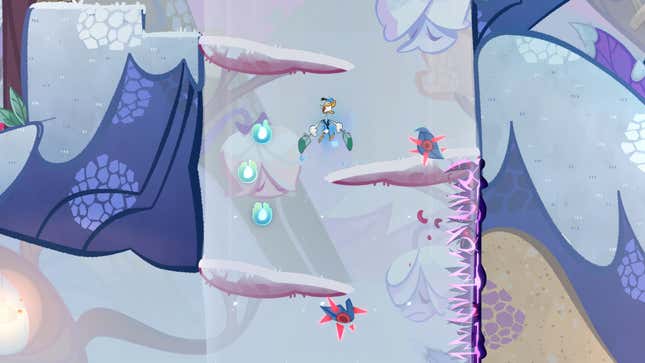
Disney is largely considered an “all-ages” company. After a century in the public consciousness, everyone from senior citizens to toddlers knows Mickey Mouse and Donald Duck, giving a project like Disney Illusion Island a potentially wide audience spanning a huge age range. Diala ultimately decided it would design for families, rather than children. Grand-Scrutton cited actor Jason Segel, who made that distinction while promoting the 2011 Muppets film to NPR.
But the desire to appeal to a wide audience didn’t factor into the game’s lack of traditional combat.
Mickey Mouse has engaged in violence before. Hell, anyone who’s engaged with the video game side of Disney has distinct memories of him swinging around a keyblade in the Kingdom Hearts series. Initially, Disney Illusion Island was going to have combat in between the running and jumping, but Grand-Scrutton said those ideas largely came from genre pressure to include them. The Metroidvania genre (even if that term is made up and is impenetrable to a layperson) is known in part for having combat encounters, but according to Grand-Scrutton, someone on the design team was able to shift everyone’s perspective on that by reframing how they saw the game.
“I think it clicked for us when one of [the members of the] design team, Liam [Welton] said like, ‘oh, I know structurally we’re a Metroidvania, but I view us as an open-world multiplayer platformer,’” Grand-Scrutton said. “It’s a very not-marketing-friendly name, but that makes so much sense. We’ve tried to just make a big seamless world with no loading screens, no levels, and it’s just platforming and all about the joy of movement. Adversaries that you have to flip over and use your skills to avoid suits that much better than like, ‘oh, I’m gonna jump on this person’s head and kill him. I’m gonna fire this weapon,’ and that carries over into multiplayer as well.”
He continued: “So often you’d find that, ‘okay, do we give this thing multiple hits so that we can all contribute, or is the person in the [lead] killing this enemy and [the rest of us] don’t experience it?’ So yes, it’s nice to not have Mickey beating people up, [even if] Mickey’s done a great job of combat in the past. It just wasn’t right for this game.”
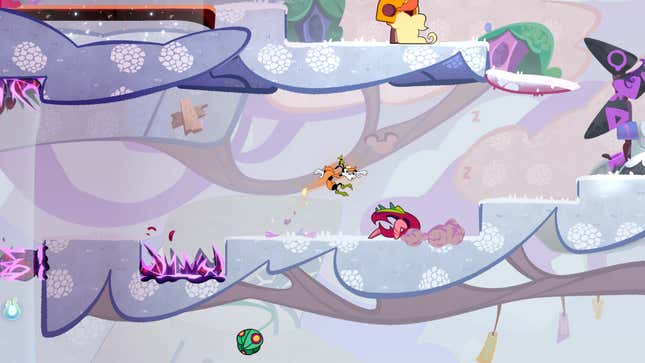
Where Disney Illusion Island ends up ranking in the pantheon of Disney video games remains to be seen, but looking at it alongside properties like Kingdom Hearts and Mirrorverse, it’s quite apparent that Mickey Mouse has starred in games that look nothing like each other. He and his friends are part of a century-long corporate machine that has mastered the art of plugging him into almost anything. Perhaps it’s the versatility of his personality that lets Mickey fit so easily into different contexts.
“Everyone says everything’s timeless,” Grand-Scrutton said. “You get, oh, this is timeless, that’s timeless. Mickey’s nearly 100 years old, and there is still Mickey stuff now that we can sit down and watch and enjoy that my nieces and nephews can sit down [and watch and enjoy]. [There are] so many different versions of Mickey that still feel like Mickey. And I think it’s because he is just […] the embodiment of joy and childhood optimism. I think it’s because Mickey almost like whatever the opposite of generic is, [and] that works [well] in a generic environment. He is so malleable, so flexible and he’s such an engaging, interesting, and lovable character.”
Regarding other lovable characters, I asked Grand-Scrutton where Daisy Duck—the classic Disney fashion icon and a queen among men—is, and why she’s not playable in Disney Illusion Island.
Oh, my God. I’m not joking. I nearly had a shirt made that said, “Where’s Daisy?” Because that is the question my team still, three years later, asks me all the time. “Where’s Daisy?” Like, yeah, I love Daisy. I want to be very clear now, on the record, I’m not anti-Daisy. I could only pick four characters and I couldn’t split up the three and I’m sorry, Daisy, but you’re no Minnie. Okay? I’m just gonna put it out there. But I love Daisy. And you know, who knows? Maybe one day in the future we [will] get to see Daisy in Monoth. But for now, these are the characters you’re gonna live with.
Disney Illusion Island launches on July 28 for the Nintendo Switch.
